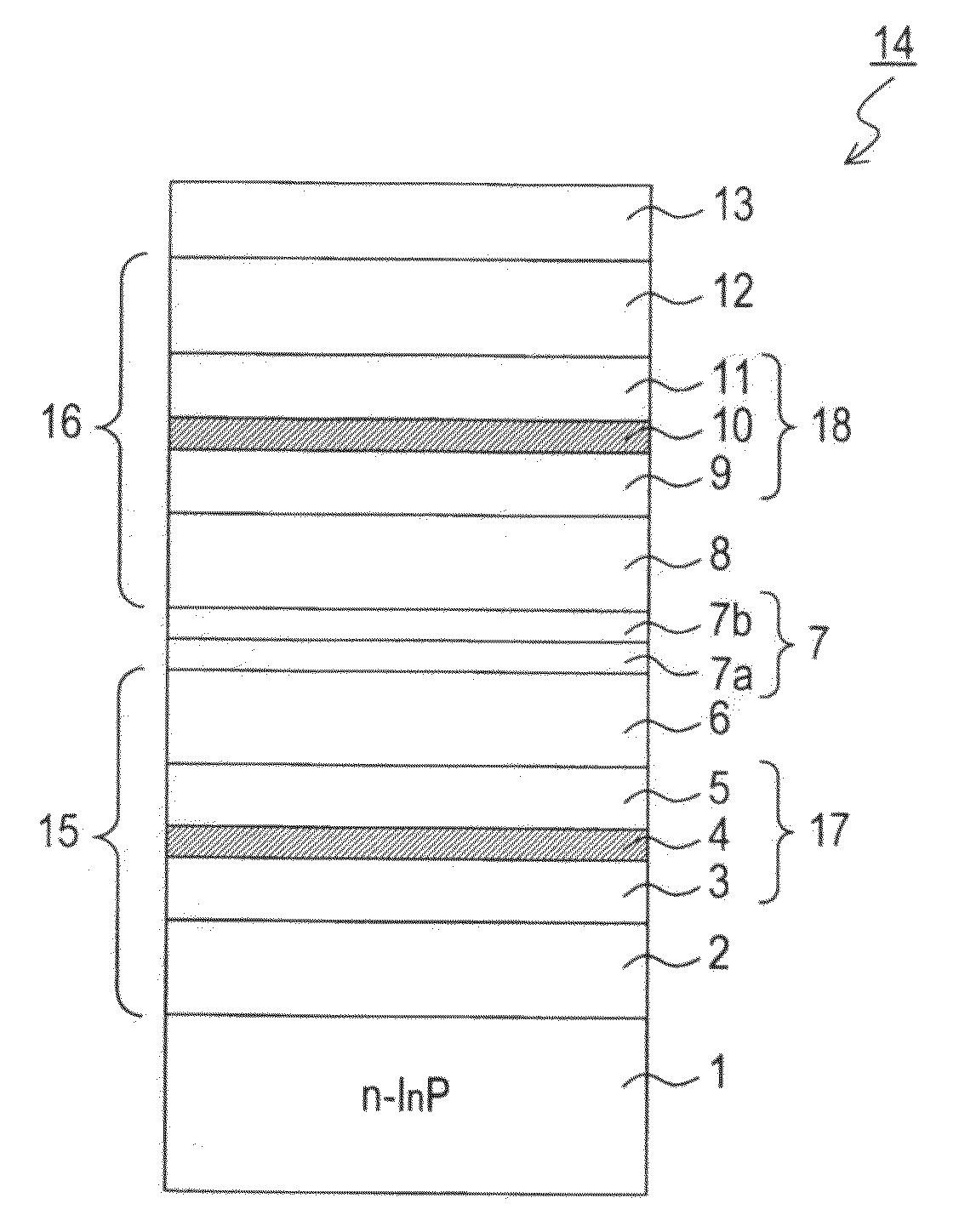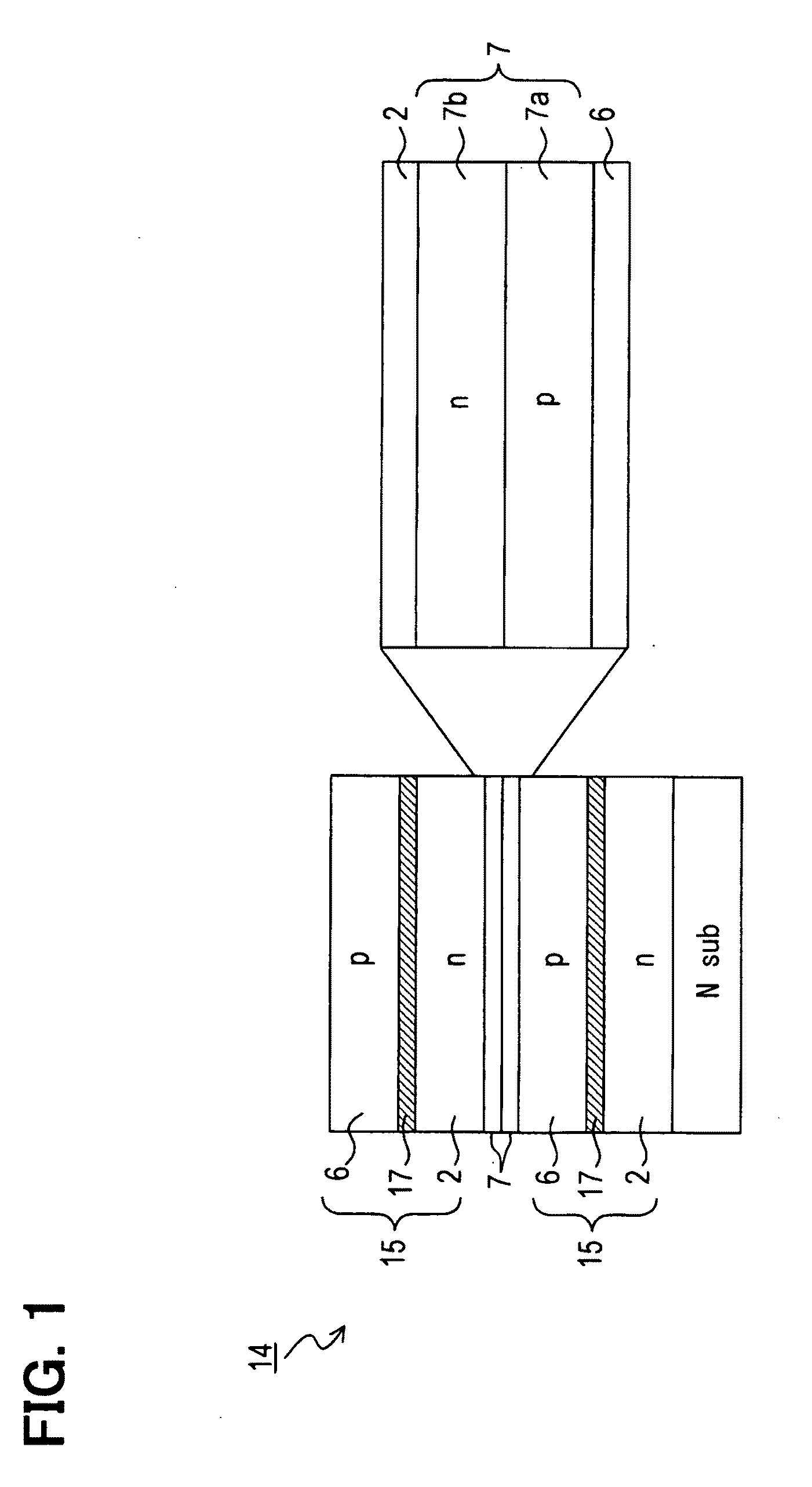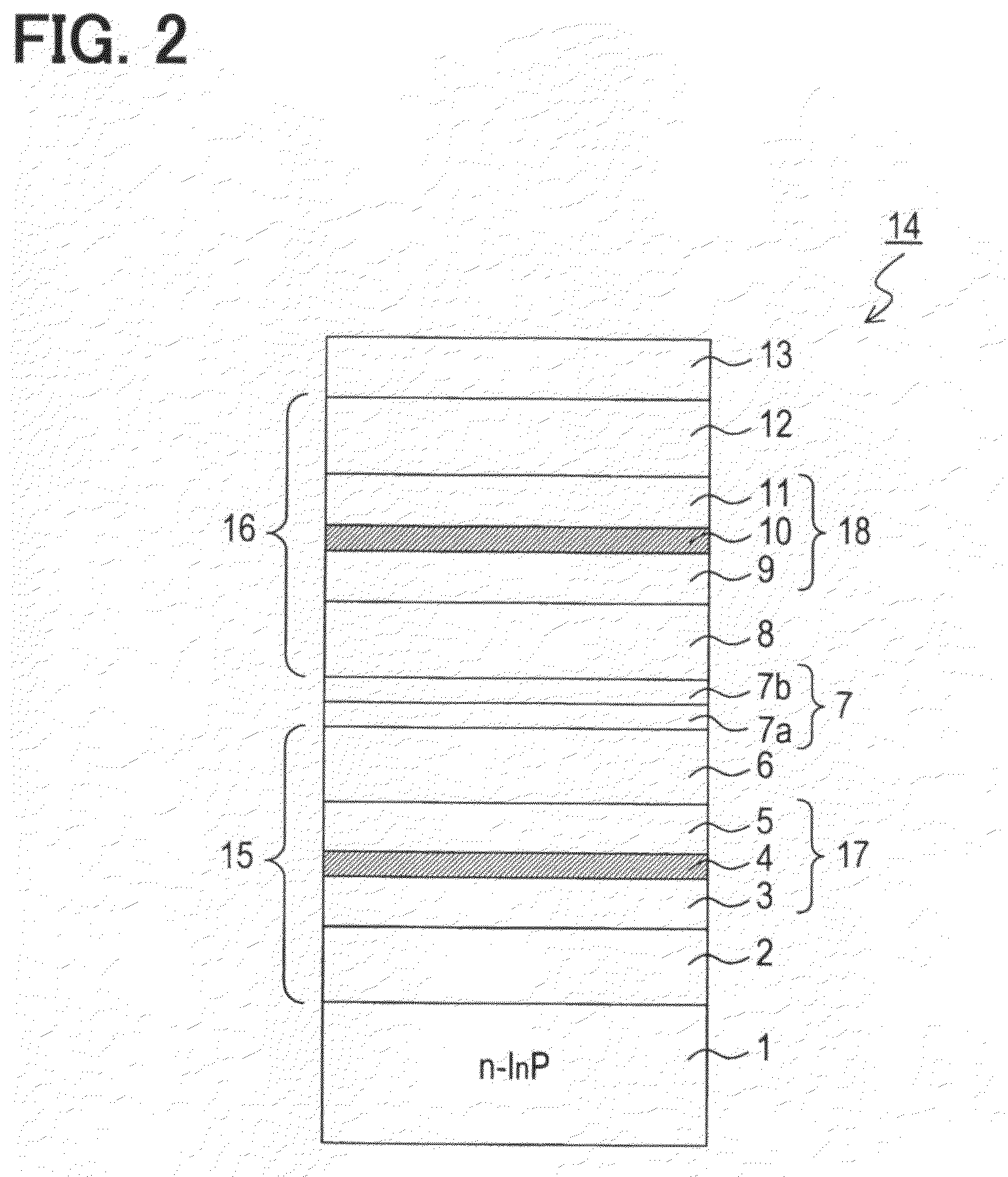Semiconductor laser structure
- Summary
- Abstract
- Description
- Claims
- Application Information
AI Technical Summary
Benefits of technology
Problems solved by technology
Method used
Image
Examples
first example embodiment
[0038]FIG. 2 shows a laser structure 14 according to a first example embodiment. The structure 14 includes a substrate 1 made of N conductive type InP, a N conductive type clad layer 2, a N conductive type waveguide layer 3, a multiple quantum well active layer 4, a P conductive type waveguide layer 5, a P conductive type clad layer 6, a P conductive type layer 7a, a N conductive type layer 7b, a N conductive type clad layer 8, a N conductive type waveguide layer 9, a multiple quantum well active layer 10, a P conductive type waveguide layer 11, a P conductive type clad layer 12, and a P conductive, type contact layer 13, which are stacked in this order. Each layer is formed by a conventional MOCVD method. A substrate temperature in a growth process is in a range between 550° C. and 800° C.
[0039]A composition, a thickness, a carrier concentration and a dopant in each layer are shown in FIG. 9.
[0040]The N conductive type clad layer 2, the N conductive type waveguide layer 3, the mult...
second example embodiment
[0049]FIG. 6 shows a laser structure 14 according to a second example embodiment. The structure 14 includes a substrate 1 made of N conductive type GaAs, a N conductive type clad layer 2, a N conductive type waveguide layer 3, a multiple quantum well active layer 4, a P conductive type waveguide layer 5, a P conductive type clad layer 6, a P conductive type layer 7a, a N conductive type layer 7b, a N conductive type clad layer 8, a N conductive type waveguide layer 9, a multiple quantum well active layer 10, a P conductive type waveguide layer 11, a P conductive type clad layer 12, and a P conductive type contact layer 13, which are stacked in this order. Each layer is formed by a conventional MOCVD method. A substrate temperature in a growth process is in a range between 550° C. and 800° C.
[0050]A composition, a thickness, a carrier concentration and a dopant in each layer are shown in FIG. 10.
[0051]The N conductive type clad layer 2, the N conductive type waveguide layer 3, the mu...
PUM
 Login to View More
Login to View More Abstract
Description
Claims
Application Information
 Login to View More
Login to View More - R&D
- Intellectual Property
- Life Sciences
- Materials
- Tech Scout
- Unparalleled Data Quality
- Higher Quality Content
- 60% Fewer Hallucinations
Browse by: Latest US Patents, China's latest patents, Technical Efficacy Thesaurus, Application Domain, Technology Topic, Popular Technical Reports.
© 2025 PatSnap. All rights reserved.Legal|Privacy policy|Modern Slavery Act Transparency Statement|Sitemap|About US| Contact US: help@patsnap.com



